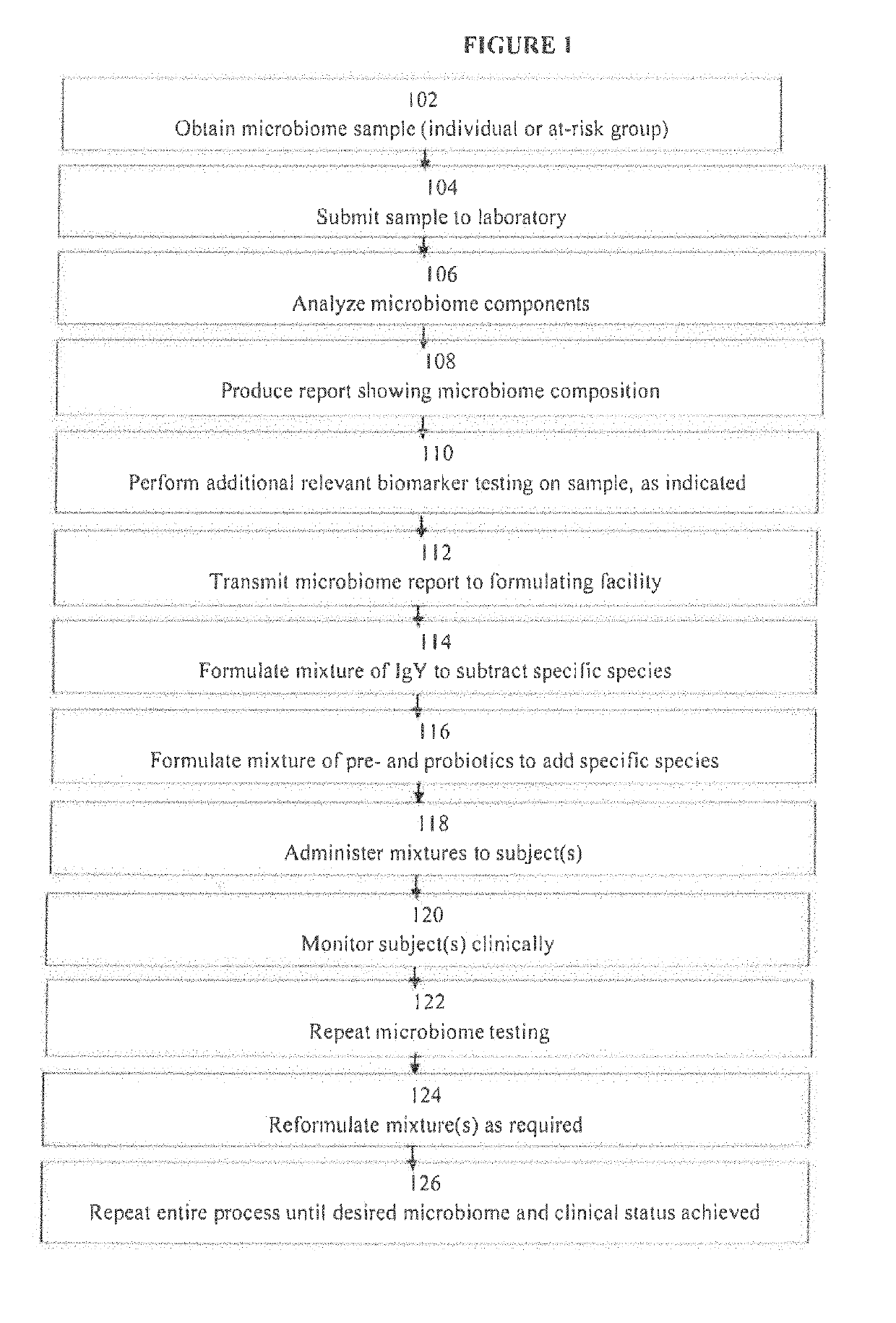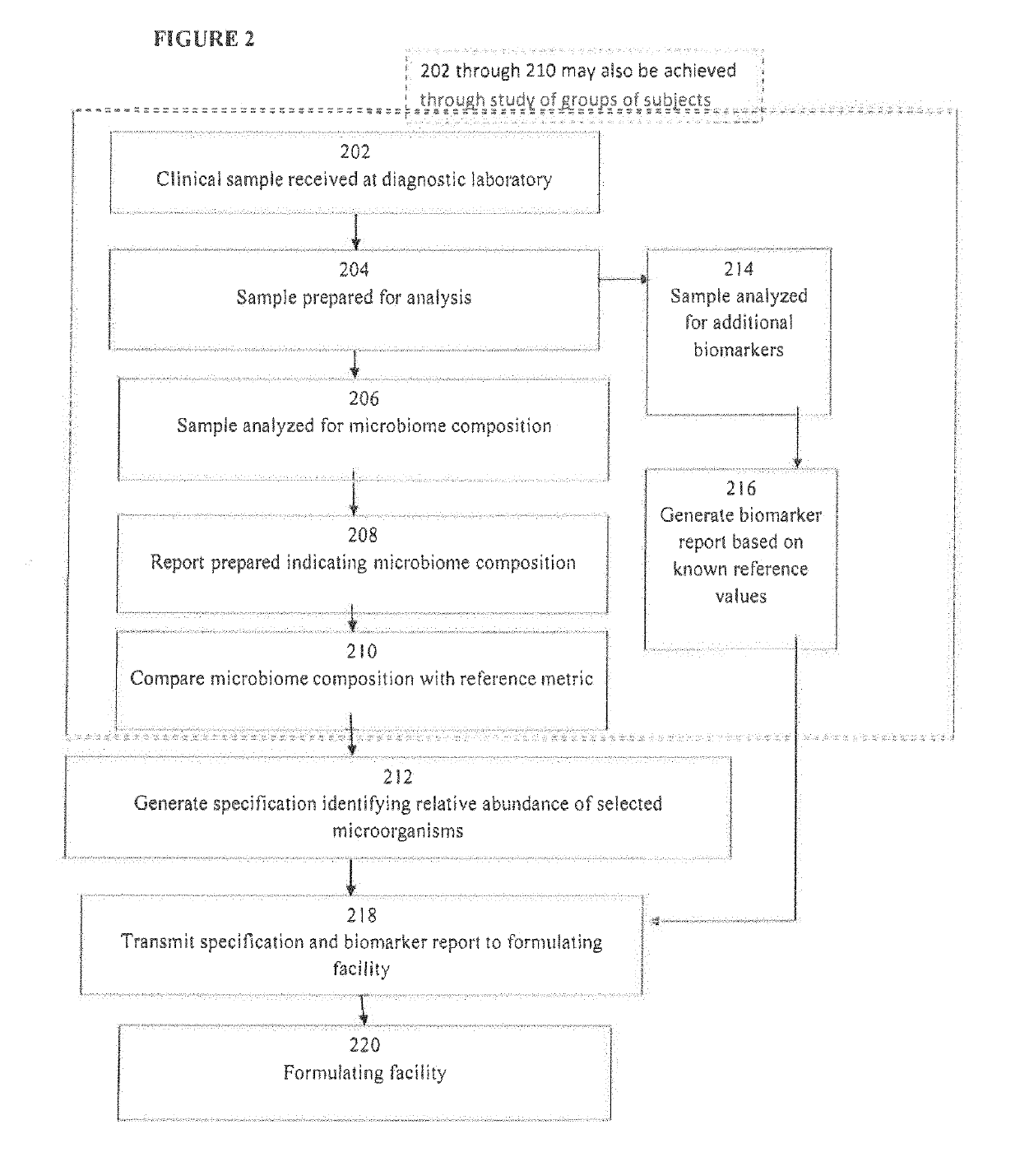Systems and methods for altering microbiome to reduce disease risk and manifestations of disease
- Summary
- Abstract
- Description
- Claims
- Application Information
AI Technical Summary
Benefits of technology
Problems solved by technology
Method used
Image
Examples
example 1
Producing Type-Specific IgY Against Selected Microorganisms and Determining Target-Specificity and Growth Inhibition
[0307]Materials and Methods: Pure live cultures of representative species of microorganisms known to be found in elevated relative abundance in two human disease states were obtained from commercial sources. In this example, the disease states are irritable bowel syndrome (IBS), and diet-induced obesity (DIO).
[0308]Published studies of IBS were first reviewed in search of examples of microorganism species, genera, families, or higher taxonomic units found in at least two studies to be associated with at least one of the disorders of interest when identified in significantly greater abundance in diseased subjects compared with those free of the disease or disease risk. When individual species were identified in such studies, those species were included; when only genera, families, or higher taxonomic units were reported, type species or commonly-available species were s...
example 2
Demonstration of Impact of Target-Specific IgY Administration on Gut Microbiome Composition in a Living Animal Model
[0343]Materials and Methods: The six target-specific IgY compounds prepared in Example 1 from the comparison of microbiome composition between lean and diet-induced obese (DIO) mice were mixed and shipped to a contract research organization (CRO) for administration to experimental DIO mice. As a control solution, an equivalent concentration of IgY extracted from eggs of unimmunized hens was shipped to the CRO for administration to control DIO mice.
[0344]The mixed IgY formulation as prepared provided an average of 174.12 mg / day of each of the six individual IgYs. This dose is consistent with published studies of IgY for treating enteric pathogens, in which 100-200 mg / kg / day have been used. Table 3 shows the calculated dose of target-specific IgY for each target organism.
TABLE 3DOSE / DAY Dose / dayTarget Microorganism(mg)(mg / kg)Bacteroides ovatus47.36192.53Lachnospira sp50....
PUM
| Property | Measurement | Unit |
|---|---|---|
| Fraction | aaaaa | aaaaa |
| Fraction | aaaaa | aaaaa |
| Angle | aaaaa | aaaaa |
Abstract
Description
Claims
Application Information
 Login to View More
Login to View More - R&D
- Intellectual Property
- Life Sciences
- Materials
- Tech Scout
- Unparalleled Data Quality
- Higher Quality Content
- 60% Fewer Hallucinations
Browse by: Latest US Patents, China's latest patents, Technical Efficacy Thesaurus, Application Domain, Technology Topic, Popular Technical Reports.
© 2025 PatSnap. All rights reserved.Legal|Privacy policy|Modern Slavery Act Transparency Statement|Sitemap|About US| Contact US: help@patsnap.com



